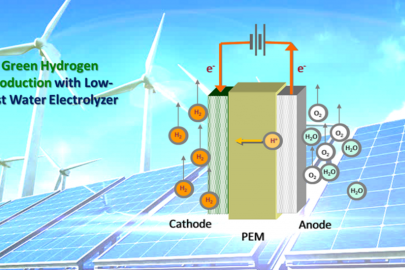Energy Materials Network
High performance materials, including both functional materials and structural materials, hold the key to innovation across many energy technologies critical to national priorities in clean energy, economic growth, and environmental justice. But with ambitious national targets for a clean power sector by 2035 and a net-zero emissions energy sector by 2050, the traditional 15-20 years-to-market timeframe for materials innovations needs to be accelerated.
Toward this end, the U.S. Department of Energy (DOE) has established the Energy Materials Network (EMN) as a community-of-practice in state-of-the-art materials research and development (R&D) specifically aimed at advancing clean energy technologies. The network comprises core consortia focused on different high-impact energy technologies, each leveraging world-class capabilities at the DOE’s National Laboratories to better integrate all phases of materials R&D, from discovery to scale-up and qualification. These consortia help facilitate stakeholder access to the National Laboratories’ capabilities, tools, and expertise to accelerate the clean-energy materials development cycle, and enable U.S. manufacturers to deliver innovative, made-in-America products for achieving our energy and environmental justice goals.
Working in collaboration with partners from the National Laboratories, industry, and academia, each consortium focuses on the R&D needs for specific classes of materials and determines their suitability to address the nation’s most pressing energy challenges.
News
Affiliated Consortia
-
 Focused on advanced water splitting materials, for the photoelectrochemical, thermochemical, and advanced electrolytic hydrogen production pathways.
Focused on advanced water splitting materials, for the photoelectrochemical, thermochemical, and advanced electrolytic hydrogen production pathways. -
 Focused on addressing scientific gaps impeding the development of improved hydrogen storage materials.
Focused on addressing scientific gaps impeding the development of improved hydrogen storage materials. -
 Focused on replacing platinum group metals in hydrogen fuel cells and water electrolyzers with more inexpensive and abundant materials.
Focused on replacing platinum group metals in hydrogen fuel cells and water electrolyzers with more inexpensive and abundant materials. -
 Materials that reduce vehicle weight to increase fuel efficiency, such as lightweight metal alloys, low-cost carbon fiber, and polymer composites.
Materials that reduce vehicle weight to increase fuel efficiency, such as lightweight metal alloys, low-cost carbon fiber, and polymer composites. -
 Focused on durable photovoltaic (PV) module packaging materials and designs to further optimize reliability and capacity of low-cost PV modules.
Focused on durable photovoltaic (PV) module packaging materials and designs to further optimize reliability and capacity of low-cost PV modules. -
 Focused on accelerating the development of catalytic technologies that convert biomass and waste resources into renewable fuels and chemicals.
Focused on accelerating the development of catalytic technologies that convert biomass and waste resources into renewable fuels and chemicals. -
 Focused on improving the durability of metals and polymers in hydrogen environments (i.e. the study of "materials compatibility").
Focused on improving the durability of metals and polymers in hydrogen environments (i.e. the study of "materials compatibility"). -
 Harnessing materials design, high-performance computing, manufacturing, and characterization to develop materials for service in extreme environments.
Harnessing materials design, high-performance computing, manufacturing, and characterization to develop materials for service in extreme environments.
Legacy Consortia
-
 Focused on development of caloric materials for cooling applications.
Focused on development of caloric materials for cooling applications.







